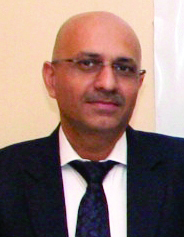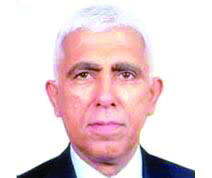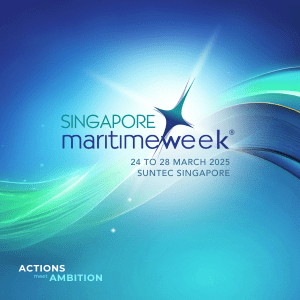The very synesis of a Port Community System is that it should be a neutral and open platform enabling intelligent and secure exchange of information to improve the efficiency and competitive position of the port communities. Globally, Port Community Systems are managed and maintained by operators who are neutral, independent, and a trusted third party.
About two years ago Ministry of Shipping approached ports and terminals for data on international transshipment of goods in India. It took two months for compilation of data from various ports. However, after creation of final MIS it was found that there was a mismatch of data in terms of the transshipment cargo volume provided by ports, terminals and shipping lines. The reason for the inconsistency was due to different methods of computing the data. It remains a challenge for the policy makers to gather reliable and consistent information about the trade for key policy decisions. Such situation could easily be avoided by implementation of PCS bringing in standardization in the industry. An effective MIS would lead to better analytics of situation, thus faster resolution of various inherent issues.
The PCS juggernaut
While PCS 1x or PCS+ is in progress, at the same time at institutional level most of the major stakeholders like shipping lines, ports, customs etc have their own proprietary web-based platforms for data/information exchange, and if we look in the context of import, a shipper has to visit 3-4 different portals of various agencies apart from physical visits before he finally takes delivery of cargo. Striking a balance is also a challenge for the success of PCS because it looks to bring in transparency but at the same time there are some strategic competitive information that companies might not like to disclose. Moreover, digitalisation has not reduced the cost for freight forwarders and spending per move has not come down for them. There is a need for digitalisation to move beyond data capturing to changing the way transaction is done. An ideal PCS should focus on incremental data and not just repetition of data.
 Notably, industry veteran Sailesh Bhatia during his tenure as President of AMTOI under the aegis of FILA mooted the idea of a port community platform. Clarifying the role and security aspect of PCS, Sailesh Bhatia, explained, “Even though each entity have their proprietary application but PCS doesn’t replicate it. PCS rather works like a PBX box which acts as a connector without it being able to listen to the conversation. In similar manner for a PCS to work doesn’t require it to store data, and it only provides the connectivity to share the information. Even in current structure all stakeholders are exchanging data between each other but that necessarily doesn’t mean capturing of information.”
Notably, industry veteran Sailesh Bhatia during his tenure as President of AMTOI under the aegis of FILA mooted the idea of a port community platform. Clarifying the role and security aspect of PCS, Sailesh Bhatia, explained, “Even though each entity have their proprietary application but PCS doesn’t replicate it. PCS rather works like a PBX box which acts as a connector without it being able to listen to the conversation. In similar manner for a PCS to work doesn’t require it to store data, and it only provides the connectivity to share the information. Even in current structure all stakeholders are exchanging data between each other but that necessarily doesn’t mean capturing of information.”
Though there are apprehensions about information security on PCS, but industry leaders clarify that if it is workable in other countries, why not in India! Some of the good examples of port community systems in places like Rotterdam or Felixstowe, where a large ecosystem has integrated into the local platform to securely exchange their data in order to streamline their operations.
Connecting the dots
In the existing model due to existence of various portals, identical data is keyed multiple times into various platforms which adds to the man-hour loss and cost of transaction, the duplication of data also amplifies the chances of error in information.
In India, each entity in the freight forwarding value chain have their own proprietary web-based logistics management portal but that hardly communicates to the systems of other stakeholders. The market also calls for uniformity, for example while JNPT calls CFS Export Form No 16 but the same form becomes Form 13 elsewhere. It would require a very determined approach from the government to enforce all stakeholders to be part of PCS, and a universal approach like GST could only make the PCS a success. The success of PCS can only be achieved when a controlled, regimental, standardized environment comes into play which couldn’t be possible without government intervention.

What was missing in PCS 1.0
The reason for which PCS 1.0 failed to achieve desired result was lack of participation by all stakeholders. It was not mandatory for freight forwarding community to be a part of PCS. Secondly, only few sections became a part of PCS as a result, the PCS system failed to deliver to its full potential. The initial version of PCS was confined only to produce vessel profiling and generation of via/rotation number which didn’t add much value to the trade because still a major part of the practice was done manually.
Sailesh Bhatia, elaborating other aspects of PCS explains that PCS’ role is to create processes. Hence, there should be an advisory body representing various sections of the trade to guideline on how the processes need to be. Currently, FILA is propagating the need for a PCS and it is in regular touch with IPA. The initial plan was IPA should spearhead PCS with support of FILA but now the Logistics division in the Department of Commerce has been mandated by PMO to take forward PCS project. FILA has proposed IPA that an independent company with the support of government should develop PCS, and trade representatives could be members of the organization. Currently, about 1,00,000 EXIM transactions take place in a day, and a nominal fee per transaction could make the company self-funded.
The future under PCS era
The maritime industry and broader ocean supply chain are suffering from major and costly inefficiencies due to ineffective data sharing and poor cross-industry collaboration. Enormous amounts of data are being generated on a daily basis in the industry and it will be even more in the future due to the increasing online interactions. “In India alone, indirect or hidden costs of trade across pharmaceuticals, textiles & garments, electronics and auto parts sectors, amount to as much as 38-47 percent of total transport and logistics costs. To reduce these costs by just 10 percent has the potential to generate additional exports of up to 5–8 percent in each of these sectors or potentially generate between US$ 0.2billion and up to US$ 3.1billion in additional exports per sector,” highlighted Julian Bevis, Senior Director, Group Relations (South Asia), A.P. Møller- Maersk A/S.
Umesh Grover, Secretary General, CFSAI

who has been closely associated in the process of setting guidelines for the new PCS, elaborated that a committee has been formed by ministry of shipping comprising of Joint Secretary, Port; Joint Secretary, Logistics; Container Shipping Lines Association (India); and CFSAI, and the committee also includes DIPP.
After taking stock of the situation on PCS during successive meetings among committee members, the government has reached to a conclusion that the new version of PCS is not fully ready, and the existing PCS is not serving the required purpose. The existing PCS was being maintained by CrimsonLogic Pte (Singapore), and the company was not keen to extend its contract, and have exited from the project. Following which Portall has been awarded the contract to maintain PCS, which will be known as PCS+, and a timeline of 7 months has been set for them to launch the new system. Portall is interacting with industry for inputs to make improvements to the PCS. FILA, which consists of 8 apex industry bodies, is the focal point to discuss various requirements of the trade. Though the government was supposed to call for tenders to develop PCS 2.0 but till date the specifications for the new system has not been finalized. In the meantime, Portall is making improvements to PCS 1.0 and will launch PCS+ for all major ports. The stakeholders who will be part of the process to develop PCS+ are ports, terminals, customs, CFS, CHA, among others and they are going to provide inputs to Portall on various requirements.
Making PCS work

The success of PCS in latest avatar would also depend on whether it plugs the shortcomings of PCS 1.0. Speaking on the lacunae of PCS 1.0, Julian Bevis, Senior Director, Group Relations (South Asia), A.P. Møller- Maersk A/S pointed that the reason behind the PCS 1.0 not living upto expectation was the structure of the original PCS which did not offer the transparency and scalability of similar systems available in other port complexes around the world. It did not enjoy the acceptance of some key stakeholders and so it could not offer what everyone needs in such a system that is seamless exchange of data between all the stakeholders.

There are a number of readyto- use platforms available which could be used to float a comprehensive PCS system useful to the entire trade. India is already behind schedule to float an effective and universal PCS system, and the new platform should embrace latest developments in the global technology space such as block chain, track & trace Application Program Interface to deliver predictability, and other advancements to remain relevant.
Mandate for Portall

The PCS being developed by Portall will be a document exchange platform where one can conduct all transactions including vessel registration, delivery order, payments etc.
Elaborating on the upcoming platform Dhruv K. Kotak, Joint Managing Director, JM B`axi Group said that Portall has partnered with some of the most prominent industry players such as Germanybased dbh, which is the oldest PCS provider in the world and has developed port community systems for ports in Bremen, Bremerhaven. Apart from which IBM is the technology partner for all the projects. Moreover, JM Baxi as a group has experience in every spectrum of maritime trade including terminals, ports, ship agency, customs clearance, etc, which enables the group to better understand the industry and its requirements. The company has been working on the port community system since 2015 and the final outcome will be a system which will be robust, scalable, and more importantly it has been developed keeping in mind the requirements of the industry. The government’s vision is to provide the new PCS free of cost to users. Portall’s role will be of a solution provider and to maintain the database, but everything will be controlled by the government including the security norms. The new PCS system will be an open platform allowing any solution provider with an offering to add value to the system and can be included onto the new PCS.
One gray area in PCS 1.0 was that it lacked in syncing with systems of other statutory bodies like customs or FSSAI, and it is still an area of concern for the PCS being developed by Portall. However, clarifying on this, Kotak said that there is direct intervention from PMO to resolve these issues, and there are chances that within couple of months customs and other statutory bodies may come onboard empowering PCS as a single platform. The pilot PCS by Portall will be out by July-August, 2018 and JNPT will be the first port where it will be implemented.
The way forward
The rest of the world has already started progressing towards Type V PCS, hence India being a new bee has the opportunity to jump straight to the latest generation of PCS to offer a rather contemporary solution to its users. One positive sign is that the newest PCS system in-line with the global practice would be based on cloud-based open platform which would allow other stakeholder to leverage on it. PCS system being an open architecture in nature would gain confidence among the trade but it remains to be seen how long it takes to convince the trade to come onboard.

Leapfrogging into the Digital Era
Increase in level of trust and change in attitude is essential for success of digitalization and to reap its benefits in terms of reduced cost and time of doing business
Indian logistics is on the threshold of leapfrogging full-fledged into the digital era. A process that had remained dormant since the 1980s has suddenly assumed urgency and purpose. A recent seminar “Digitising regulatory control & supply chain logistics in improving ease of doing business,” organized by NACFS in coordination with Central Board of Indirect Taxes & Customs, dwelt on the various measures that have been implemented in the recent past and the way forward.
Pranab Kumar Das, Special Secretary to Govt & Member – (Customs), CBIC, said that the objective of the government was to have a secure business environment and to reduce the cost and time for doing business. The premise for modernization was to simplify the entire procedure and make it paperless. The Customs had sought to reduce the level of inspection with minimal human intervention the emphasis being on risk management. Currently six different agencies have updated their risk parameters in the Single Window Interface for Facilitating Trade (SWIFT) platform. The secretary shipping has written to 17 secretaries in the various ministries to migrate 46 more agencies into its ambit. All the licenses, permits of different agencies, documentation would be updated into the system and be available on line, he said.
E sanchit, ie the uploading of all documents on line, which was introduced from 15th March 2018, has now been made compulsory from 1st of April. However Das said that E sanchit will not be successful if the CFS/ICD personnel did not use it properly. He urged them to not to indulge in old practices of handling hard copies, but take the new processes to its logical conclusion.
The AEO program Tier 2 and Tier 3 will have better facilities in terms of deferred duty, less amount of bank guarantee and would not be subject to extensive scanning, Das said. He further emphasized that it was very important for the stakeholders to become AEOs because then they would become a trusted partner with the Indian Customs. He urged more entities to come under the AEO programme. “If you are trusted, Customs can talk to you in a trusted environment and many things can be shared,” he conceded.
In the last financial budget Customs had introduced important changes in the Customs Act. Faster clearance facilities, facilities for ledger where money can be deposited which can be used for payment of duty amount after assessment, thereby obviating dependencies on banks.
Sandeep Bhatnagar, DG Systems with additional charge DG Export Promotion said, stakeholders should use technology to bring about greater operational efficiency and more importantly to ensure compliance. “We work in a trust-based environment, but trust has to be earned.” He further said, if ICD and CFS operators want to be successful then they had to do something different. And that was where technology or digitization came in. “Customer should be the focus. Use technology to keep them in your focus,” he said.
Satya Srinivas Joint secretary Customs, CBIC, said that India’s rank in the ease of doing business fell by 3 places, despite many reforms being implemented by the government. “Why does not the World Bank recognize these reforms,” he asked? Is the situation as bad as before or has it improved? He felt that the World Bank ranking was a perception and not reality. He believed that large number of the stakeholders did not respond and remained silent. He firmly believes that in absolute terms India had made some marginal improvement. But in relative terms India has dropped 3 places. Import clearance had improved by 4 days. DPD had dramatically reduced clearance to 60 hours. Satya Sahu, Commissioner (Border Controls & Single Window) spoke of the new initiatives being introduced. Twenty five hi tech scanners would be introduced in 25 ports around the country. Private ports would have to install their own scanners at their costs. Controls were being tightened to check how inspections were taking place. Measures were being taken to reduce disputes related to assessment. Govt was very serious to migrating to new environment. As Das stated what was required now was to increase the trust level, empowerment in the ranks, increase digitization and more importantly there should be a change in attitude. Lastly but not the least go paperless.








